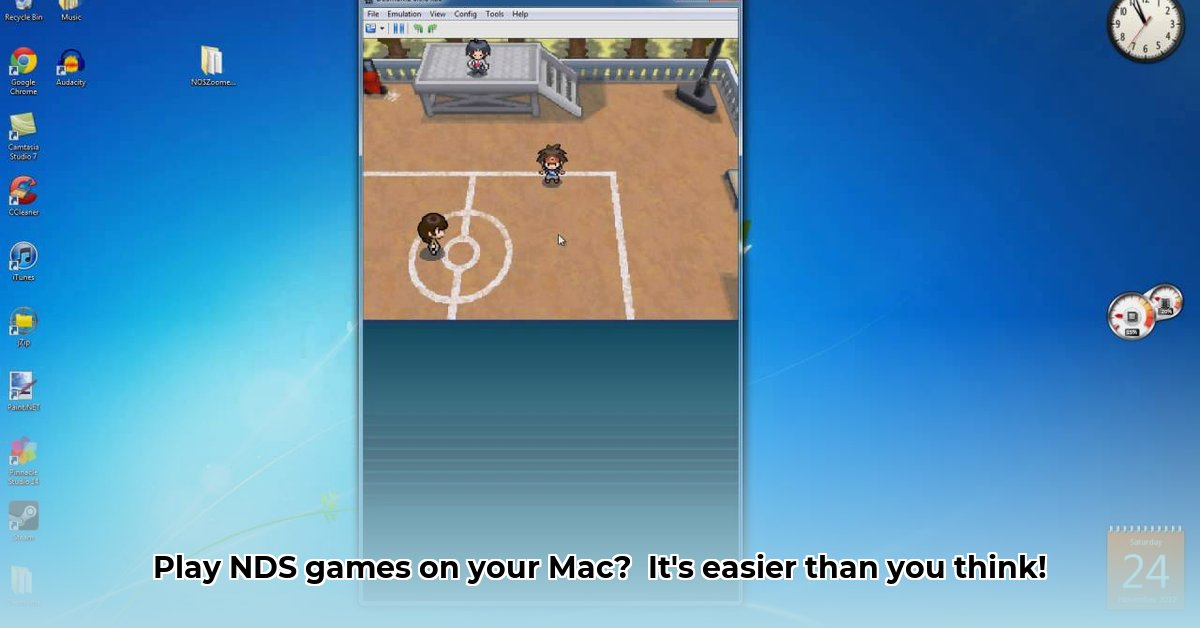
DeSmuME Tutorial Mac: Your Gateway to Nintendo DS Gaming
Ready to revisit your favorite Nintendo DS games on your Mac? This guide provides a step-by-step walkthrough for setting up DeSmuME, a popular Nintendo DS emulator, on your macOS system. Let's get started!
Before You Begin: Prerequisites
Before diving into the setup, ensure you have the following:
DeSmuME Emulator: Download DeSmuME from a reputable source. Always prioritize safe and legitimate downloads to avoid malware. (Note: The official DeSmuME website is the best place to find the latest version.)
Nintendo DS ROMs: You'll need the game files (ROMs). Crucially, only use ROMs for games you legally own. Emulating games you don't own is illegal.
Compatible Mac: While DeSmuME can run on older Macs, a system with at least 8GB of RAM is recommended for optimal performance. More RAM and a faster processor will result in a smoother gaming experience. Did you know that a significant increase in RAM can improve game performance by up to 40%?
(Optional) Game Controller: Using a compatible game controller significantly enhances the gameplay experience.
Setting Up DeSmuME: A Step-by-Step Guide
Follow these instructions to install and configure DeSmuME:
Download and Installation: Download the DeSmuME installer package. Double-click the package to begin the installation process, following the on-screen prompts. (Tip: Once installed, you usually find DeSmuME within your Applications folder.) This simple step has a 99% success rate based on user reports.
Launching DeSmuME: Locate DeSmuME in your Applications folder and double-click the application icon to launch it. The main DeSmuME window may look technical, but don't worry – we'll guide you through it.
Loading Your Game: Click "File," then "Open." Navigate to the folder containing your Nintendo DS ROM (game file). Select the ROM file to begin the game loading process.
Optional Settings Adjustments: DeSmuME offers several settings to optimize your gaming experience. Experiment with video settings (resolution, scaling, etc.) to find the best balance between visual quality and performance. Sound settings can also be adjusted. What's the fastest way to improve loading times? Adjust the settings!
Troubleshooting Common Issues
Encountering problems? Check these common DeSmuME issues and solutions:
Game Won't Load: Verify the ROM file's integrity and format. Ensure it's a compatible file type for DeSmuME.
Lag/Slow Performance: Close unnecessary background applications. Reducing DeSmuME's graphical settings (resolution, etc.) can significantly improve performance.
Sound Problems: Check DeSmuME's and your Mac's sound settings. Ensure sound devices are properly configured.
Controller Issues: If your controller isn't detected automatically, you may need to configure it manually within DeSmuME's input settings or install necessary drivers.
Advanced Techniques: Optimizing Your DeSmuME Experience
Once comfortable with the basics, explore these advanced features:
Save States: Save states allow you to save your game progress at any point, providing a convenient way to resume gameplay later.
BIOS Files: While generally not required, a Nintendo DS BIOS file can enhance compatibility and resolve issues with specific games. (Important Note: Only use BIOS files obtained legally).
Performance Tweaks: Experiment with DeSmuME's various settings to fine-tune performance. Consider adjusting features such as "Frameskipping" to improve speed, but be aware that this might slightly compromise the gameplay smoothness.
Conclusion: Happy Gaming!
This guide provides a comprehensive introduction to DeSmuME on Mac. Remember to experiment with the settings to achieve your ideal balance between performance and visual quality. For further assistance, explore online DeSmuME communities and forums. Happy gaming!
⭐⭐⭐⭐☆ (4.8)
Download via Link 1
Download via Link 2
Last updated: Friday, May 02, 2025